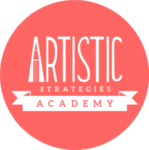
In this article, our founder, Claudine Fernandez shares about the power of visualization that helped her achieve her goal of going to Harvard and how she has applied this powerful technique to the curriculum that she has designed in Artistic Strategies Academy.
After my 5th year of teaching A’ Level literature in a local junior college, I was experiencing a bit of a burnout. The repetitive methods of teaching that I was applying and the high levels of stress that both the teachers and the students faced, were taking a toll on me.
I remember dragging my feet to my car in the carpark to drive myself to work before the crack of dawn one morning. It was then that the thought of doing my masters at Harvard University crossed my mind briefly. I wasn’t sure if I could get in as I knew it was extremely competitive and I didn’t know where I stood in the grand scheme of things.
However, that thought sparked a desire in me that I knew I had to explore further. I decided that something had to change if I was going to keep my passion for teaching alive. I did my research about the courses, learnt more about the requirements and set my mind on it.
“To achieve my goal, I would actually visualize myself seeing the red brick walls, attending classes at Harvard, walking down the halls, interacting with the brilliant faculty there, making meaningful connections with like-minded peers and even breathing in the air in Harvard yard. With the help of pictures of the university and videos of lectures being conducted there, I was able to construct vivid and life-like pictures of life at Harvard.”
I did this continually until it became second nature to me and I was able to feel the emotions of joy and fulfilment with every visualization.
Did this all come true? Yes, and more in 2013! I cried tears of joy when I got the acceptance letter in March that year. That was the beginning of my dreams coming true. In the course of my studies at Harvard University, I met the most dedicated and passionate educators and the most competent and inspiring faculty. They gave me the necessary tools and motivation that I longed for to make a difference in the education system in Singapore and beyond.
By the time I had graduated with a Master’s in Education (specialising in Arts in Education) in 2014, I was ready to take big steps and make significant changes to the educational landscape in Singapore.

Don’t get me wrong. Visualization was not the only thing I had to do to get there. I worked hard to take the GRE exams, sought feedback, wrote several drafts of my personal statements and ensured that I could get a range of testimonials about my character and abilities.
However, visualization was the most important because it constantly reminded me of the goal I had set and motivated me to work towards it, no matter how challenging the circumstances were. In other words, visualization made my goal come to life. You may be familiar with Walt Disney’s quote, “If you can dream it, you can do it.” I’d like to add on to that and say, “If you can dream it, you must visualize it to achieve it!”
Today, I believe that it is essential that we teach children how to visualize success and milestones that they would like to achieve. It is best to start when they are young because it takes practice and time to develop and fine-tune the process.
This is why visualisation is one of the cornerstones of the curriculum that I have designed for students of Artistic Strategies Academy (ASA).

They would visualize their future lives; what kind of families, careers and houses they would have in the future. They are also thought to use their senses in their descriptions of the surroundings in order to make their descriptions as vivid as possible.
From my own experience, visual stimulation is extremely important in the visualization process and these have become resources in the teaching and learning at ASA. For example, if they were illustrating a scene from a country they dream of visiting, we provide them with pictures that they can be inspired by.
I have found that even in daily tasks, visualization is the first step to generating ideas and articulating their ideas clearly in words. I would visualize the outcome or end goal and then brainstorm ideas on how to achieve that outcome and subsequently, write down a step-by-step action plan.
What are your thoughts on visualization? Have you ever visualized your future and made it a reality? I would love to hear from you. Drop me an email at mail@artisticstrategies.com.sg.
Written by Claudine Fernandez
